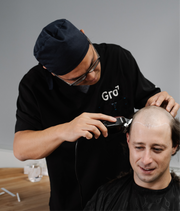Ready to explore your options?
If you're considering hair restoration, you can book a 15-minute phone call with a trained Gro Clinics consultant.
We'll walk you through the process, answer general questions, and explain next steps if you're interested in an in-clinic assessment. This call is for general information only and not a medical consultation.
Prefer a phone call?
CALL US INSTEAD















